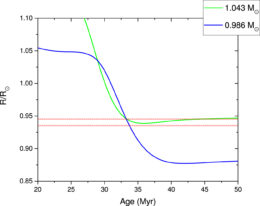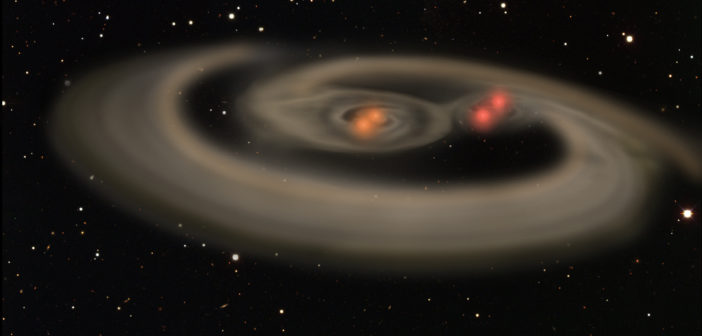Editor’s note: In these last two weeks of 2017, we’ll be looking at a few selections that we haven’t yet discussed on AAS Nova from among the most-downloaded papers published in AAS journals this year. The usual posting schedule will resume in January.
The Age of the KIC 7177553 System
Published January 2017
Main takeaway:
Two scientists from the University of Delaware, James MacDonald and Dermott Mullan, recently derived the age of the quadruple star system KIC 7177553. The system appears to be younger than originally thought — it’s best modeled as being 32–36 million years old.

Based on stellar models and the observed radii of the stars, their ages are likely between 32 and 36 million years. [MacDonald & Mullan et al. 2017]
Why it’s interesting:
The KIC 7177553 system is intriguing because of its complex structure: it consists of two binaries (one of which is eclipsing) orbiting each other in a hierarchical structure. Observations of KIC 7177553 can teach us how hierarchical systems like this one form and evolve, but first we need to determine how old the system is so we know what stage of its evolution we’re seeing. The authors’ estimate of 32–36 million years is relatively young for stars; this age places them in the pre-main-sequence phase.
The additional intrigue of KIC 7177553:
KIC 7177553 is of further interest to astronomers because it might host a super-Jupiter-sized planet in an eccentric orbit around the system. If true, this system may provide an excellent opportunity to learn more about how planets in hierarchical star systems are born and evolve. Having an accurate determination of the age of the system is therefore especially important so that we can constrain possible planet formation scenarios.
Citation
James MacDonald and D. J. Mullan 2017 ApJ 834 99. doi:10.3847/1538-4357/834/2/99

2 Comments
Pingback: Selections from 2017: The Age of a 4-Star System – MeasurementDataBases for Industry & Science
Pingback: A young double double